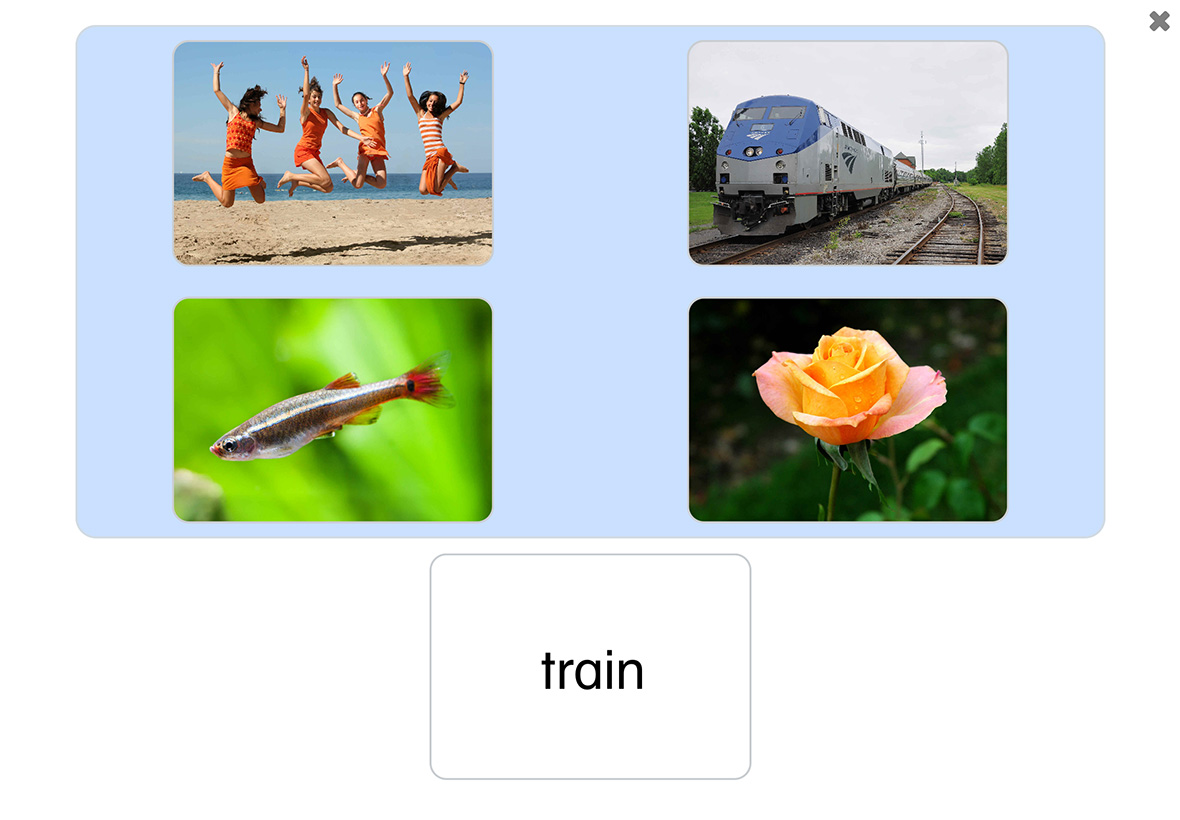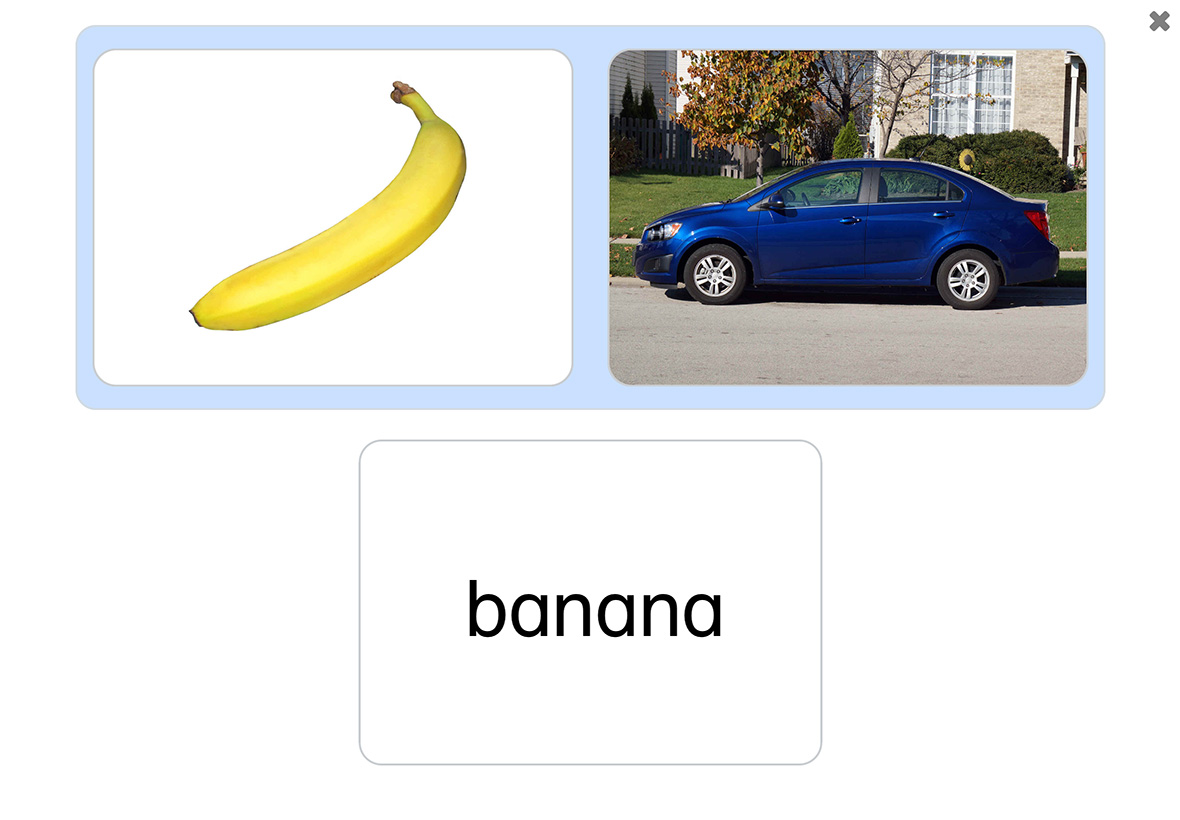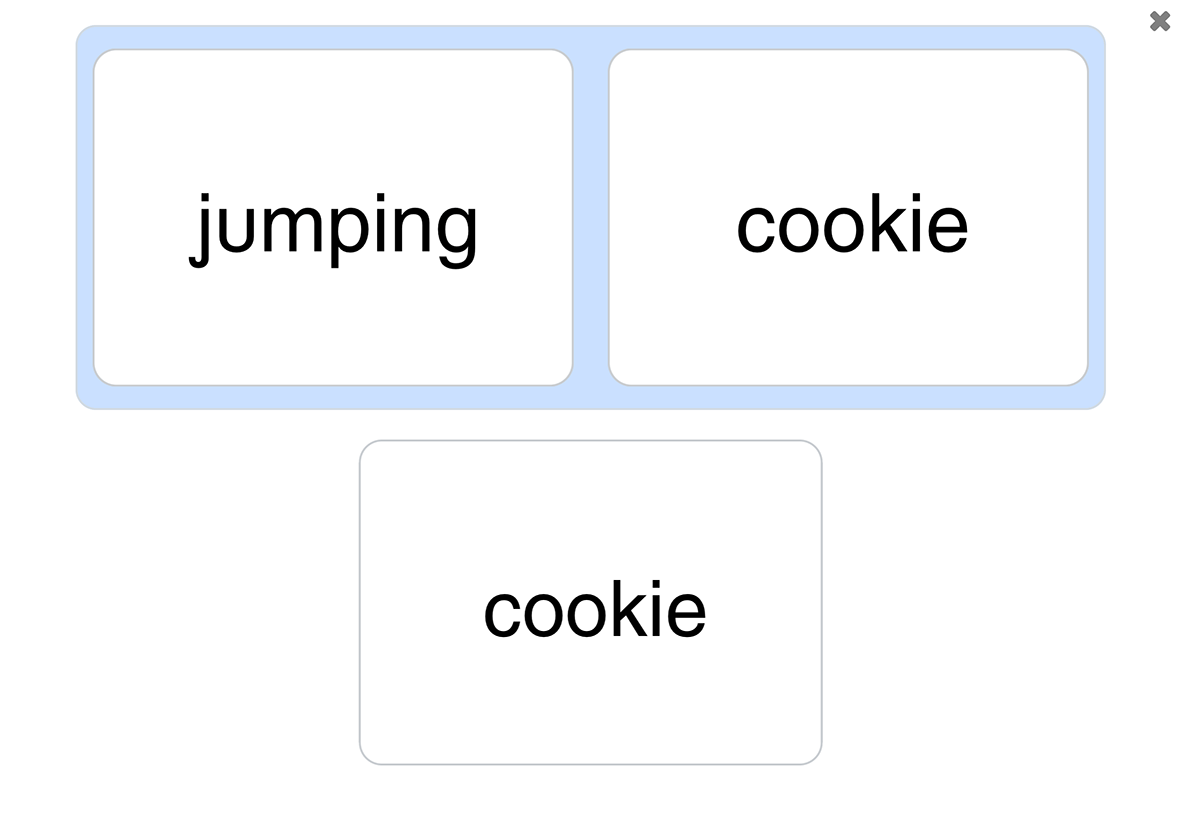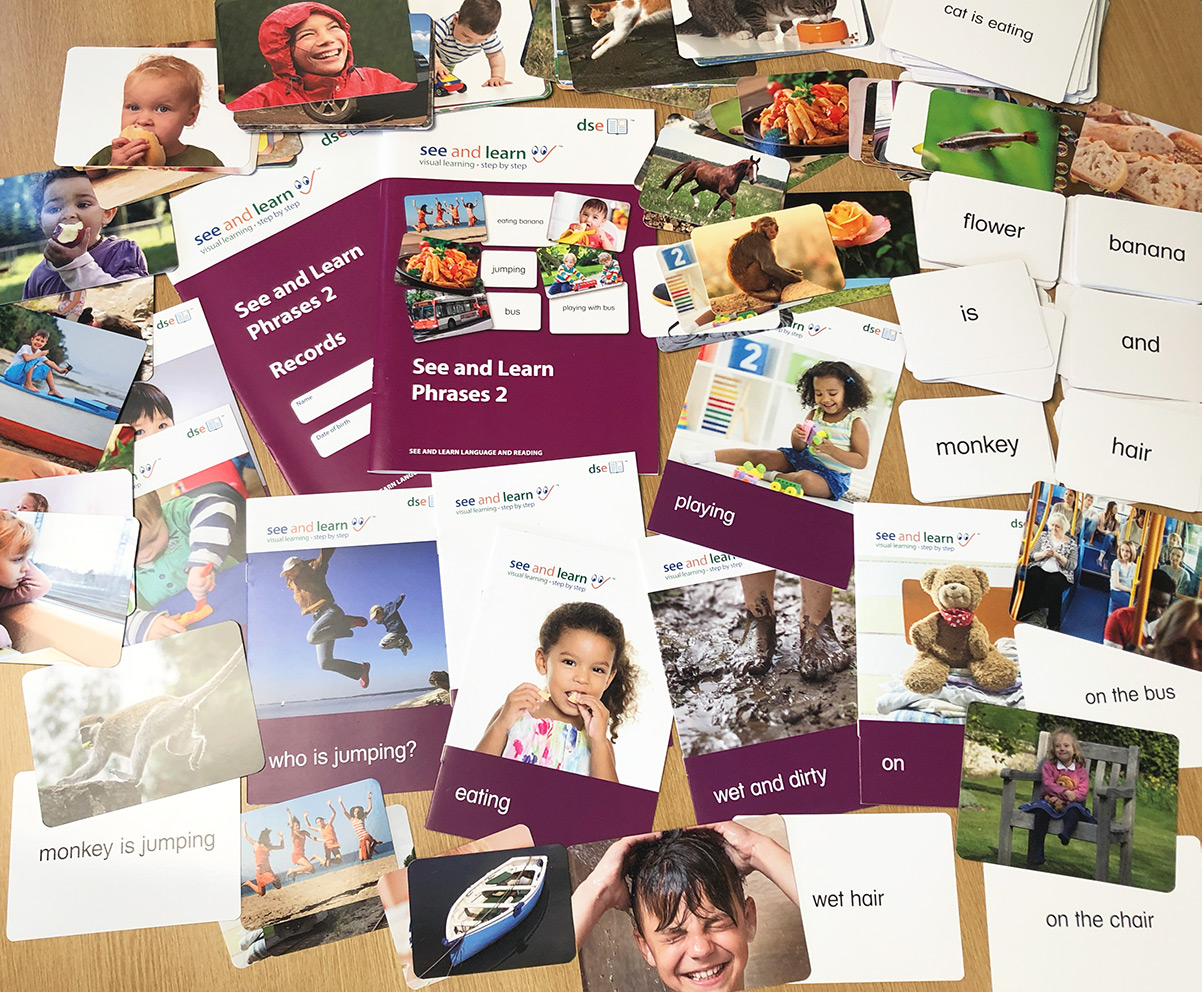Phrases 2
See and Learn Phrases 2 is the fourth step in See and Learn Language and Reading. It is designed to teach young children to progress from using single words to using two words together when they talk.
See and Learn Phrases 2 also introduces young children to reading words as sight words. Reading sight words helps children practice saying two words together.
Sight word reading is introduced in the context of reading simple picture books that illustrate the meanings of the phrases being taught.
The activities are intended to supplement natural, everyday opportunities to learn language with the additional support that most children with Down syndrome, and children with similar additional learning difficulties, need to learn to communicate.
Learning goals
- Teach an understanding of 44 new two-keyword phrases made from combining 30 new sight words, selected from vocabulary that the child understands
- Rehearses 7 sight words and 4 phrases that were previously taught in See and Learn Phrases 1 to encourage success by building on and extending what your child already knows
- Teach phrases that include 4 different types of two keyword phrases usually learned at this stage of language development
- Teach sight words that include nouns, verbs, adjectives and a preposition, an article (the), auxiliary verb (is) and conjunctions (and, with)
- Introduce books that illustrate the meanings of phrases and draw attention to the printed words beside each picture
- Teach your child to recognise written words and to distinguish between them
- Teach your child to link sight words with spoken words as you read to them and as they engage in teaching matching activities
- Teach your child to see how sight words can be combined to form two-keyword phrases that convey meaning and to listen to how this corresponds with words being combined in spoken language
- To practise saying words as your child reads them
- Test understanding of sight words and two-keyword phrases through word/phrase to picture matching activities
- Encourage your child to pay attention and engage in teaching activities for short periods of time
Features
- Designed to build on the children's relative strengths in visual processing and to minimise working memory demands
- Designed to advance in small steps and offer lots of opportunities for practise and consolidation
- Pre-selected sight words and phrases that are developmentally appropriate for children at this stage of language development
- 8 simple reading books, illustrating XX two-keyword phrases
- 2 sets of 37 sight word cards and 33 word picture cards to support word to word and word to picture matching activities
- 48 phrase cards and 48 phrase picture cards to support phrase to picture matching activities
- Simple design to avoid distraction and focus attention on the learning tasks
- A detailed guide with step-by-step instructions
- Record forms to track your child's progress and plan the teaching activities
- Resources for teaching in any English dialect (optional spoken prompts are included in the app editions with UK and US accents)

Sight words and phrases taught
Sight words:
Phrases:
When to start
See and Learn Phrases 2 is designed for children who:
- understand 80 or more words, including
apple ,ball ,banana ,bed ,bread ,cat ,chair ,cookie /biscuit ,dinner ,dog , (to)eat /eating ,fish ,horse , (to)jump /jumping ,monkey ,rabbit ,yogurt /yoghurt - can say or sign 8 or more of the words that they understand
- can follow at least 3 two-keyword instructions - for example, "wash doll" or "put bear to bed" in a play situation
- read and understand at least 12 written words
Children who have completed the activities in See and Learn Vocabulary 1, See and Learn Vocabulary 2 and See and Learn Phrases 1 should be ready to start the activities in See and Learn Phrases 2
Many children with Down syndrome will reach this stage by about 30 months, but rates of progress vary widely - some children will reach this stage earlier, some later.
See and Learn Progress Tracker
Our online progress tracker is coming soon.
Use it to monitor and support your child's development, with advice on activities and strategies to promote development, and guidance on which See and Learn steps may be able to help.
Next steps
Children who have learned the sight words and phrases in See and Learn Phrases 2 are ready to learn to put more words together and to read simple phrases using See and Learn Phrases 3 if they have also learned the required vocabulary (taught in See and Learn Vocabulary 3).
See and Learn Language and Reading teaches the meaning of spoken words and encourages children to practise saying new words. It is designed to be used alongside See and Learn Speech which includes activities to encourage clearer speech.

How to buy
See and Learn Phrases 2 is available as a printed kit or as an app for Apple iPads.






